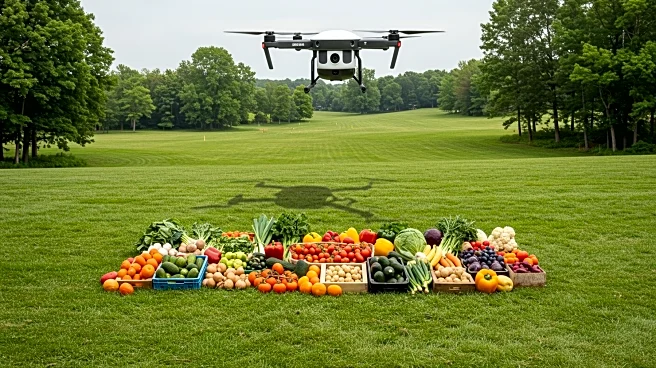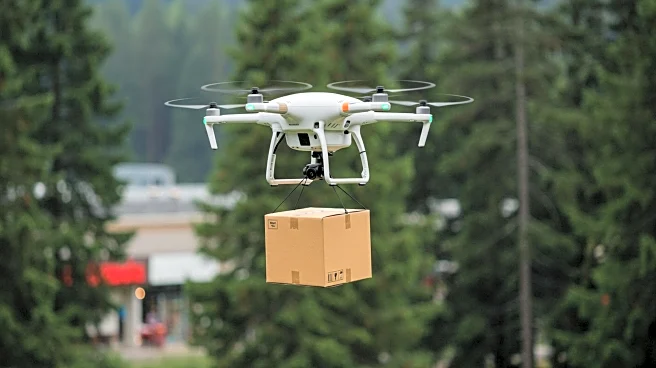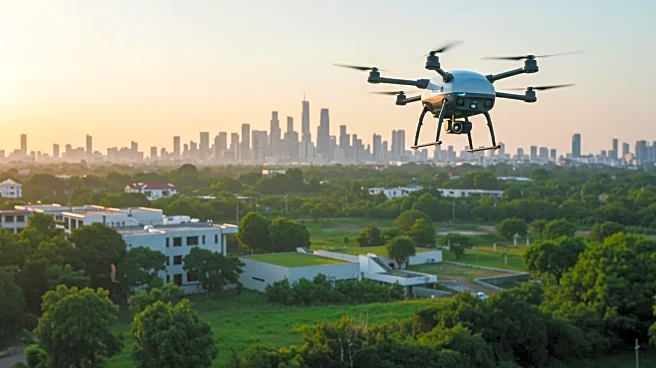What's Happening?
Amazon has announced a significant expansion of its same-day grocery delivery service, aiming to reach over 1,000 cities and potentially 2,300 locations by the end of the year. This move has put pressure on competitors like DoorDash and Instacart, whose stocks have seen declines of 4% and 14% respectively. Despite this, analysts like Bernstein's Zhihan Ma believe that the market reaction may be exaggerated. Ma suggests that there is still ample room for these companies to maintain their market share, as the online grocery delivery segment continues to grow. Instacart, for instance, could enhance its market position by lowering free delivery thresholds to attract new customers. DoorDash, despite the recent stock pullback, has seen a 48% increase in shares this year, with analysts maintaining a positive outlook on its future performance.
Why It's Important?
The expansion of Amazon's grocery delivery service underscores the intensifying competition in the online grocery market, a sector that has seen significant growth due to changing consumer habits. This development is crucial for stakeholders in the grocery delivery industry, as it could reshape market dynamics and influence consumer choices. Companies like DoorDash and Instacart, which have established themselves as key players, may need to innovate and adapt to maintain their competitive edge. The potential for increased market penetration and consumer demand presents both opportunities and challenges for these companies. Investors and market analysts are closely monitoring these shifts, as they could impact stock valuations and strategic business decisions in the sector.
What's Next?
As Amazon continues to expand its grocery delivery service, competitors like DoorDash and Instacart are expected to explore strategies to enhance their offerings and customer experience. This could involve partnerships with more retailers, improvements in delivery logistics, and competitive pricing strategies. Analysts will be watching for any signs of market share shifts and consumer behavior changes. Additionally, the response from traditional grocery retailers, who may need to strengthen their own delivery capabilities, will be a key factor in the evolving landscape. The ongoing developments in this sector will likely influence future investment and operational strategies for all involved parties.











